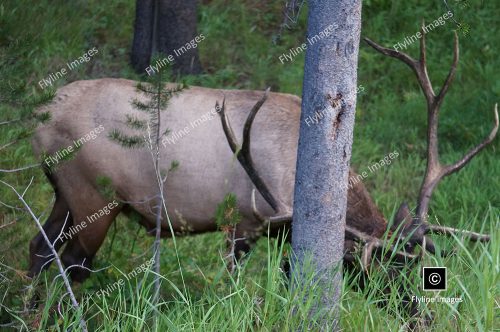Bull Elk In Yellowstone National Park
Bull Elk DSCN1315
$15.00
Description
Purchase this photo for your use. This huge Bull Elk was managing his group along the banks of the Madison River.
Image & Download Information
For this product, we have provided 3 image size options, Large 4000 x 2500, Medium 2000 x 1250 and Small 1000 x 625. When you purchase this photo, you will receive an email confirmation of your order. That email will summarize your purchase and provide you with the download links for the images and videos you purchased.
MORE ABOUT THIS PHOTO
The bull elk is one of the most iconic animals found in Yellowstone National Park, known for its impressive size and majestic antlers. These creatures can weigh between 600 and 1,100 pounds, with males, or bulls, generally larger than females. During the fall mating season, known as the rut, bulls exhibit a spectacular display of strength and dominance, engaging in bugling vocalizations to attract females and establish their territory. The antlers of a bull elk can grow up to four feet in length and are shed annually, regrowing each spring. Yellowstone’s diverse landscape provides a rich habitat for these magnificent animals, as they roam the park’s meadows, forests, and riverbanks, playing a crucial role in the ecosystem. Spotting a bull elk in its natural setting offers visitors a glimpse into the raw beauty and wildlife diversity of this remarkable national park.
Elk are not the only fascinating animals found in Yellowstone National Park. The park is also home to a variety of other wildlife, including bison, grizzly bears, wolves, and many more. These creatures play an essential role in maintaining the delicate balance of the ecosystem within the park. Visitors can witness these animals interacting with each other and their environment, providing a unique opportunity to observe them in their natural habitat.
The presence of elk in Yellowstone has a significant impact on its surroundings. As herbivores, elk feed on various plants and help control vegetation growth. This grazing behavior also benefits smaller animals by creating open areas for them to thrive. Additionally, elk serve as prey for predators such as wolves and bears, playing a vital role in the food chain of the park.
Yellowstone National Park is not only a sanctuary for wildlife but also a place of research and conservation efforts to protect these animals and their habitats. Through ongoing studies and monitoring programs, experts gain valuable insights into elk behavior and population trends, allowing them to implement measures to maintain healthy populations. Visitors can support these efforts by following park regulations and being respectful of wildlife while exploring the park.
Elk are an integral part of Yellowstone National Park’s ecosystem, representing the natural beauty and diversity that makes this national park so special. Visitors can witness these magnificent animals in action during their visit, gaining a deeper understanding of their significance and the importance of preserving their habitat. By appreciating and respecting these creatures, we can help ensure that future generations will also have the opportunity to experience the magic of Yellowstone’s bull elk and other wildlife.






